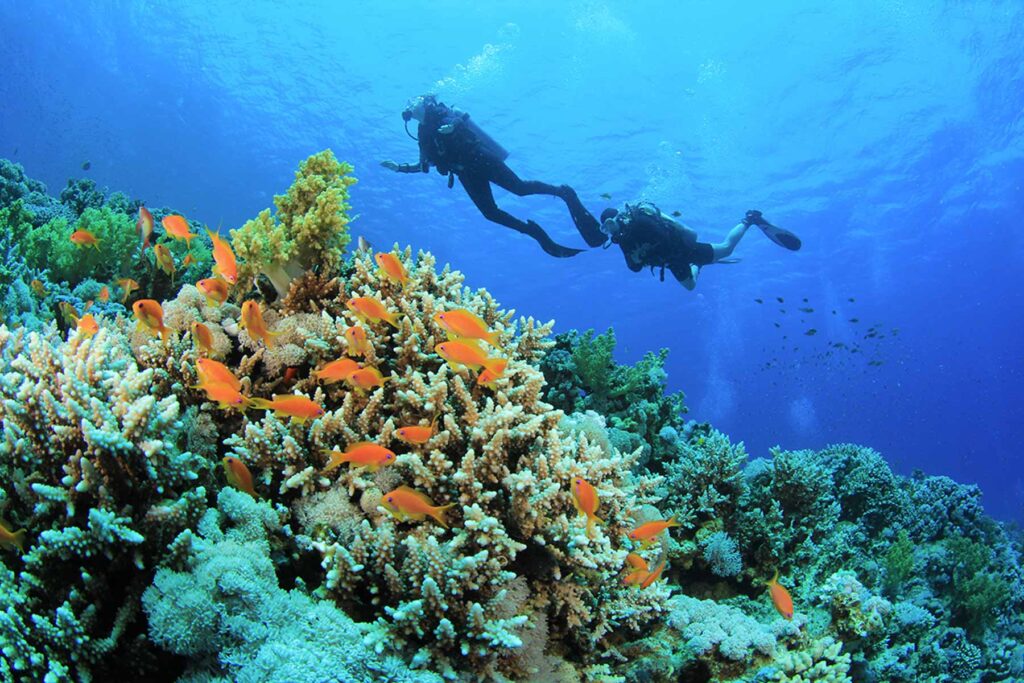The tegnue
The astonishing seabed of Caorle
Tegnue are rocky formations rising upwards from the seabed, typical of some North Adriatic areas.
They can be seen in various shapes: sometimes alone, i.e. far apart from each other, or grouped together.
They are mainly formations of limestone origin, which can rise up to several metres and are very different from the classic “elevations“, which are largely composed of mud and sand.
Origin of the name
The name “tegnua” is mainly related to the words “hold” or “stop” and derives from the fact that fishermen’s nets are held by the roughness of the seabed.
In seafaring jargon, they are also called “tresse”, due to the intertwining of one with the other that characterises them.

To get a “tegnua”
Getting a tegnua, at least until a few years ago, very often meant damaging the fishing net even in a devastating way.
The arrival of high-tech equipment, initially the “Loran” and now the GPS, has ensured that over the years they have been almost entirely signposted, so currently, at least as far as trawling is concerned, they are secured from any danger.
Today, only divers approach these million-year-old sites, and they are the only beings, apart from the fish that live there, who can enjoy their spectacular beauty.
The Northern Adriatic, although small, is among the seas with the most of them in its shallow waters.
The “tegnua” is a heritage and a reservoir of marine life that has no equal, so if well managed and protected, lobsters, scorpion fish, conger eels and dozens of other fish species will be able to continue to inhabit the seabed for many years to come.
Discovering Caorle
Caorle is a picturesque village on the Venetian coast in the Veneto region.
This charming seaside resort boasts an historic centre characterised by narrow cobbled streets, colourful houses and an authentic atmosphere that embodies the essence of tradition.
The city centre is actually a real jewel that attracts visitors from all over the world.
Its origins date back to Roman times, when it was an important trading centre and a port of call for the Adriatic Sea routes.
Over the centuries, the city has been influenced by various civilizations, such as Byzantine, Lombard and Venetian, which have left an indelible imprint on its architecture and culture.
The city is dominated by charming, colourful houses with façades painted in vibrant shades such as pink, blue and yellow. These traditional houses, some of which date back to the 16th century, give the old town a picturesque and unique appearance.
The main square, called Piazza Vescovado, is the beating heart of the old town. Here you will find St Stephen’s Cathedral, an imposing Romanesque church dating back to the 11th century, with an onion-shaped bell tower rising above the cityscape.
The cathedral is a place of great historical and religious importance for the city, and its interior holds some very valuable artworks.
In addition, strolling through the narrow streets of the old town, visitors can discover old craft workshops and souvenir shops selling typical local products.
There are also cosy restaurants and cafés where you can enjoy delicacies typical of the Veneto region, such as the famous “cicchetti“, small appetisers accompanied by a glass of wine.
A visit to the old town would not be complete without a walk along the promenade. The golden beach stretches for several kilometres along the coast and offers the possibility of relaxing in the sun or taking a swim in the crystal-clear waters of the Adriatic Sea.
During summer, Caorle bustles with cultural and folklore events that attract tourists and locals alike. he most famous celebrations is the feast day of St Roch, the town’s patron saint, held on 16 August.
About the author
Vittorio Emanuele Dalla Bella is 61 years old and has been a fisherman for over 35 years. Amante del mare, è un profondo conoscitore dell’Alto Adriatico e delle sue tegnue.
